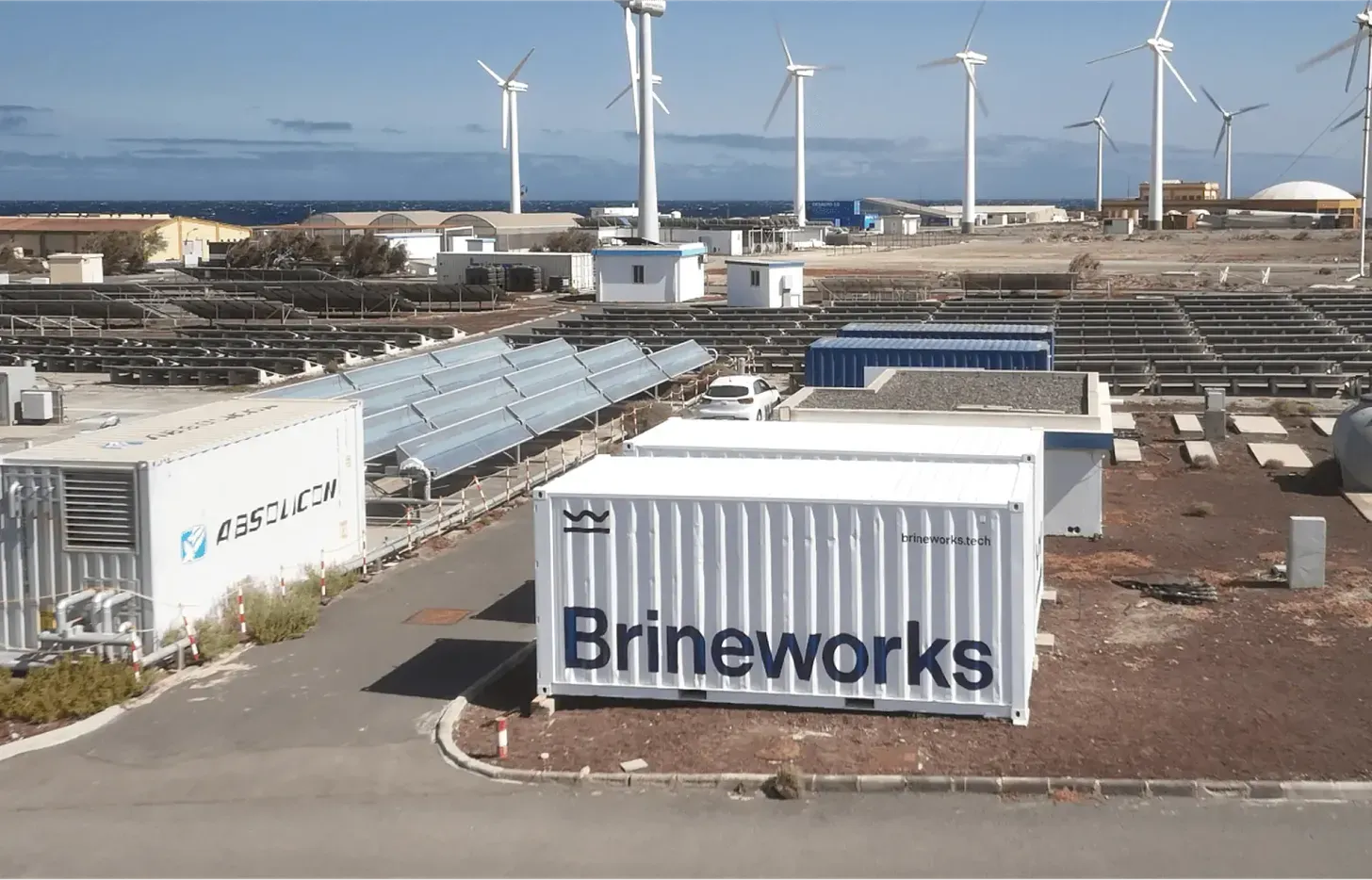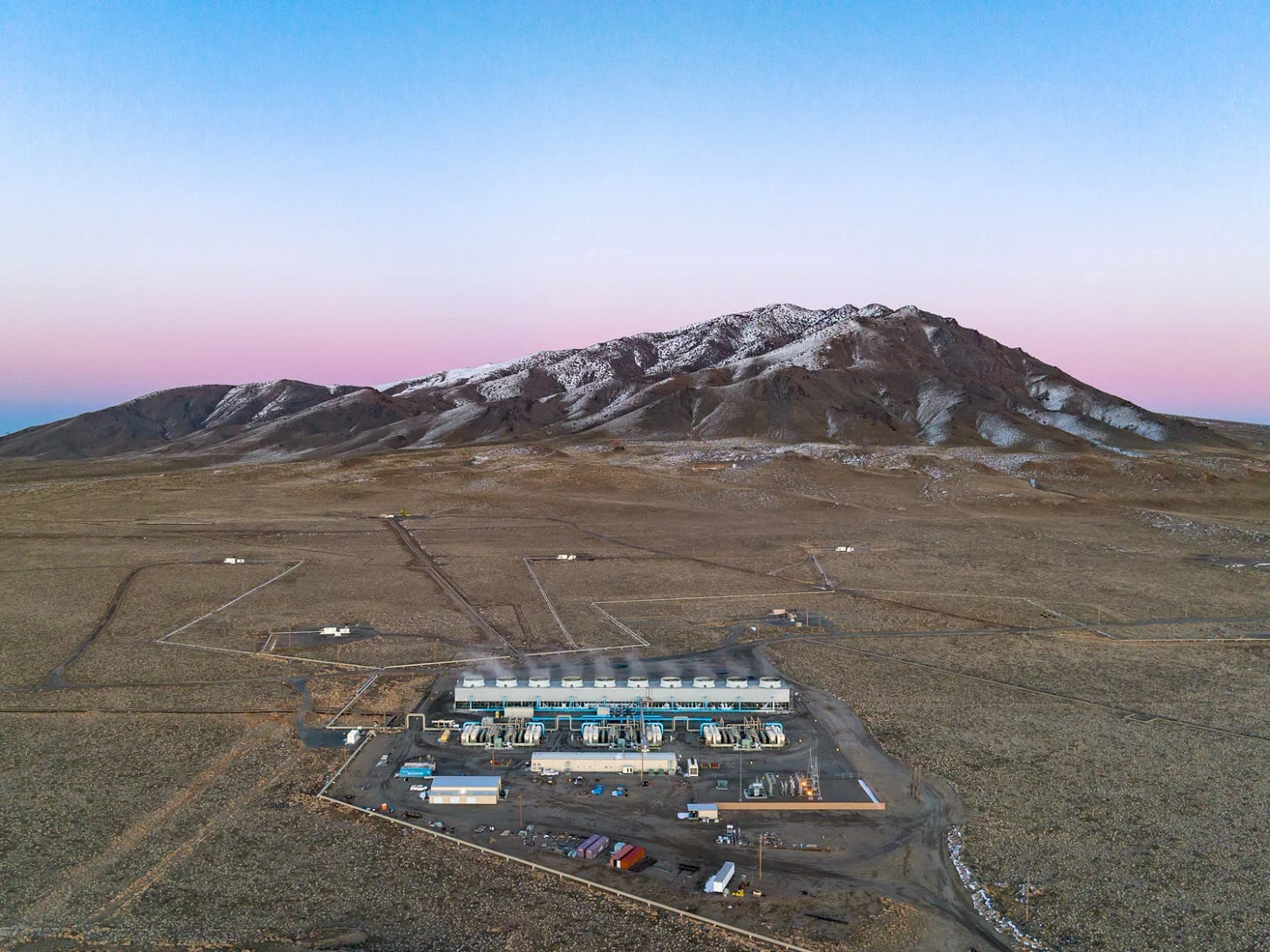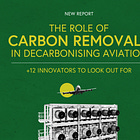4 transformative sectors to watch in 2025
From ocean-based solutions to next-gen carbon capture, these emerging technologies are likely to transform sustainable aviation.
As air travel continues to connect our global community, its environmental impact casts an increasingly urgent shadow. The International Air Transport Association (IATA) projects air passenger numbers will double by the 2040s, yet we're currently falling short of our sustainable aviation fuel (SAF) targets.
Despite these challenges, speaking to dozens of innovative startups over the past year has made me an optimist. I have witnessed the convergence of ingenuity, tech breakthroughs, and environmental solutions, which gives me confidence that there is a path forward.
Based on these interactions, four sectors have captured my attention as particularly promising for 2025:
Ocean-based climate solutions
Geothermal power systems
Next-generation battery technology, and
Advanced carbon capture
What makes these sectors especially compelling is their synergistic potential. Imagine ocean-based carbon capture feeding SAF production powered by geothermal energy while advanced batteries electrify ground operations. These aren't distant dreams – the building blocks are being assembled now.
1. The blue economy: aviation's ocean of opportunity
Climate tech discussions often focus on land-based solutions, but the so-called blue economy represents a vast, largely untapped frontier for aviation sustainability.
Focusing on sustainable ocean resource utilisation, this sector is projected to generate $1.5 trillion in revenue and millions of jobs globally while offering vital decarbonisation solutions.
Three key developments particularly interest me:
a. Tidal power
Tidal energy is becoming increasingly significant in renewable space. In 2023, ocean energy installations achieved unprecedented levels, with tidal stream technology generating 93 GWh of clean electricity in Europe, a small number but one that is growing.
Players in this space include:
The Czech Republic's Octoteq, building platforms combining wind, solar, and wave power.
Minesto's innovative approach of flying kites in the oceans rather than in the air to generate power demonstrates the creative thinking needed.
Meanwhile, CorPower Ocean secured 32 million EUR in funding to advance their efficient wave power technology.
b. Direct ocean capture
Direct ocean capture (DOC) technology is revolutionising our approach to carbon management.
The Netherlands has emerged as a centre of innovation in this space, with several compelling companies:
Pure Carbon Blue has set an ambitious goal of removing 1gt of CO2 by 2030 through its direct water capture technology, offering CO2 as a feedstock for SAF production.
SeaO2 raised over $2 million to build its first pilot facility by 2025.
Brineworks (see our piece) has pioneered a system combining seawater electrolysis with renewable energy, simultaneously producing clean hydrogen and capturing carbon.
Turning to Canada, Aeon Blue's approach (see our piece on Aeon Blue) is interesting – their seawater-to-SAF technology will yield valuable byproducts, including high-grade technical water and green oxidants, used to subsidise fuel production. Their first pilot plant in Nova Scotia aims to demonstrate cost-competitive Power-to-Liquid (PtL) fuel production by 2031.
c. Seaweed
The potential of seaweed and algae for carbon capture and sustainable fuel feedstock is impressive:
In Barbados, startup Rum and Sargassum is pioneering the conversion of rum waste and seaweed into biofuel feedstocks.
Macrocarbon in the Canary Islands is developing seaweed-based products ranging from bioplastics to SAF, while the EU-funded Fuelgae project is exploring multiple microalgae streams as SAF feedstock.
2. Geothermal's magma moment: the underground revolution
Geothermal energy is moving from a niche power source to a cornerstone of clean energy production. While there's been much discussion about nuclear as a clean hydrogen and SAF production power source, we should pay equal attention to geothermal's potential.
What makes me particularly optimistic about geothermal is its unique combination of benefits. Unlike intermittent renewables, it provides stable baseload power.
Recent advancements in drilling and power plant technology have made it increasingly accessible and cost-competitive. Enhanced Geothermal Systems (EGS) are opening up possibilities in previously considered unsuitable regions while increasing awareness of its environmental and economic benefits, which drives investment.
Major tech companies are getting involved in geothermal. Google's launch of a first-of-its-kind geothermal powerplant in Nevada with Fervo is set to power the company’s increasingly AI-hungry data centres.
Meanwhile, an analysis by Project InnerSpace suggests that redirecting existing oil and gas drilling capabilities towards geothermal could supply 77% of global electricity demand with current technology – a staggering potential that deserves more attention.
The sector is attracting serious investment from energy majors, exemplified by Chevron's $25 million investment in Swedish geothermal investment fund Baseload Capital. This influx of drilling and subsurface engineering expertise accelerates development and deployment.
Florida-based Magma Power represents what could be a transformational breakthrough for aviation. Their eleven global patents, including one for green fuel production, demonstrate extraordinary potential. Their system employs specialised wells drilling kilometres deep into magma chambers, where temperatures range from 900 to 1,200 degrees Celsius.
Using proprietary heat transfer technology, they've achieved what could be game-changing economics: projected electricity generation costs below $0.01 per kilowatt-hour, enabling green hydrogen production below $1/kg. If that is realised, we could see e-Fuels being cost-competitive with fossil-fuel-based kerosene.
3. Next-gen batteries: electrifying aviation's future
Battery technology has long been aviation's limiting factor, but the breakthroughs I'm seeing in this space give me cause for optimism.
Three areas particularly stand out:
a. The silicon revolution
Companies like Sila Nanotechnologies, Amprius (see our piece on Amprius), and Group14 Technologies are pioneering silicon-based anodes that deliver tenfold improvements in energy density compared to traditional graphite anodes. Their innovations, which address volume expansion, thermal stability, and cycle life challenges, open new possibilities for electric aircraft range and capability.
b. Solid-state batteries: a safer, more powerful solution
Solid-state battery technology represents a fundamental shift in energy storage that could be transformative for aviation. Companies like SOLiTHOR are developing aviation-specific solid-state lithium batteries that address the industry's critical safety, weight, and energy capacity requirements.
c. Beyond lithium-ion: exploring new frontiers
While lithium-ion batteries currently power many devices, their limitations are becoming increasingly apparent. Companies are actively seeking alternatives to address concerns about cost, resource availability, and environmental impact, particularly for ground storage and charging solutions.
United Airlines, for example, has made significant investments in this area. Recognising the need for more sustainable and efficient technologies, United has backed Natron Energy, a developer of sodium-ion batteries. Sodium-ion batteries offer several advantages over lithium-ion batteries, including lower cost, a greater abundance of raw materials, and improved safety.
This technology holds promise for electrifying ground support equipment, such as pushback tractors and ground power units, reducing reliance on fossil fuels and minimising emissions. In August, Natron Energy announced the opening of its first commercial-scale facility in Michigan.
In addition to sodium-ion batteries, other promising chemistries are emerging, including lithium-sulfur and zinc-air batteries. These technologies offer potential energy density, weight, and cost benefits, making them attractive for various applications.
💡 Read more in our report about electric aviation:
4. Next-gen direct air capture: from carbon removal to strategic asset
Whenever I write about DAC, I'm inevitably met with a stream of sceptics in the comments, pointing out that it's extremely expensive and energy-intensive as a technology. However, recent conversations with next-generation developers reveal breakthrough approaches that could transform DAC from an expensive necessity to a strategic asset.
Breaking through the cost barrier
Heirloom's innovative limestone-based technology, which secured £150 million in Series B funding in December 2024, demonstrates growing commercial viability. Their process accelerates natural limestone's CO2 absorption from years to days, targeting the crucial $100 per carbon tonne barrier set by the US Department of Energy.
Their first commercial facility, operational since 2023, captures 1,000 tonnes of CO2 annually, with plans for a 17,000-tonne facility in Louisiana by 2026. Meanwhile, Climeworks' Generation 3 technology, unveiled in June 2024, has achieved remarkable efficiency gains, simultaneously doubling CO2 capture capacity while halving energy consumption.
Disruptive approaches
RepAir Carbon's electrochemical process represents another leap forward (read our piece on RepAir). Their significantly reduced energy requirements compared to traditional systems improve both efficiency and cost-effectiveness. Their "Intel Inside" strategy, positioning themselves as the industry standard supplier for carbon removal projects, could accelerate adoption through manufacturing standardisation.
Academic research continues to push boundaries. University of Cambridge researchers have developed an innovative carbon capture method using activated charcoal enhanced with hydroxide ions, creating a highly effective CO2 "sponge." While optimisation for humid conditions continues, the technology's adaptability to capture various molecules by modifying charcoal pores and ion combinations suggests broader applications beyond carbon capture.
💡 Read more about carbon removals in our report:
Why 2025 could be transformative
While challenges remain in the broader climate tech landscape, innovators in these four sectors reinforce my optimism about aviation's sustainable future.
For industry leaders willing to embrace these innovations early, the opportunities extend beyond environmental benefits to include significant competitive advantages and new revenue streams.
After all, the future of flight isn't just about maintaining our current capabilities – it's about reimagining what's possible while preserving our planet for future generations.









